From airflow to number of trays, how do you choose the best food dehydrator for your family? Watch, listen, or read to learn about the seven features I consider essential to any dehydrator, plus three non-essential ones, too!
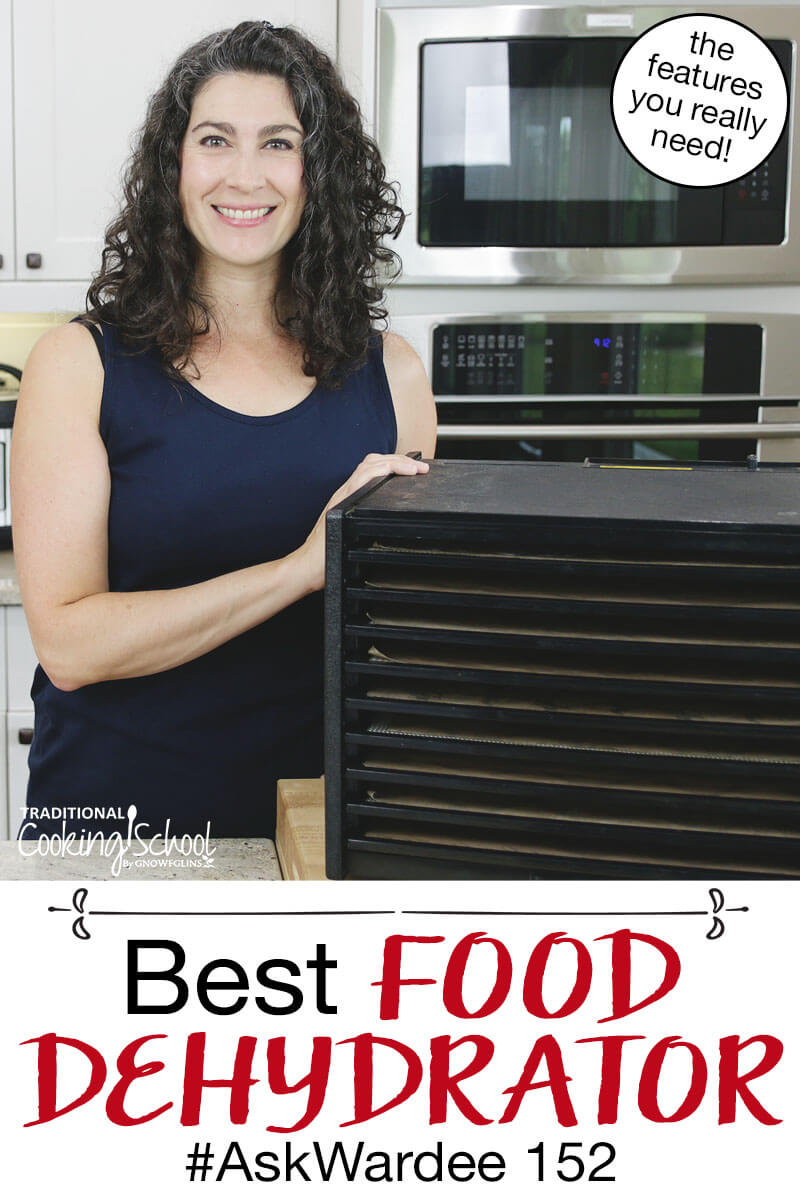
Oh, the dehydrator options… stackable trays or a cube, stainless steel or plastic, thermometers and timers…
What is essential and what you can pass on?
In today’s #AskWardee, I’m sharing what you must have in a dehydrator … and what won’t make a difference!
Keep reading or watching below to learn more!
Subscribe to #AskWardee on iTunes, Stitcher, YouTube, or the Podcasts app.
The Question: What’s The Best Food Dehydrator? What Features Do You Recommend?
Meghan R. asked:
Before I purchase your Dehydrating eCourse, I see the Excalibur brand recommended by you has a variety of options from digital to non digital, timers of 26-48 hours, solid door to clear, adjustable temperature or not. Having never dehydrated except in my Wedgewood oven with gas pilot, I don’t know what features would be good to have and what are not really necessary as there are a variety of models to choose from. Thanks for the help.
Lori, thank you for your question!
Because we’re featuring your question on today’s #AskWardee, you’re getting a gift — a FREE eBook and Video Package! Our team will be in contact with you so you can choose which one you’d like!
Essential Features
I’ll share some of the essential features I look for in a dehydrator… and why! So whether or not you choose the dehydrator I recommend (this Excalibur 9-tray), you’ll know what to look for in brands and models.
#1 — Airflow Direction
Dehydrators usually have one of two forms of airflow: vertical or horizontal.
Vertical is where the fan is on top or bottom of unit and flows up and down (vertically). Horizontal is where the fan is at the the back or side of dehydrator and flows horizontally.
Horizontal airflow is preferred by most people, as you get even heating/drying and less mixing of flavors. However, vertical (with the fan on bottom) is more in line with nature, as heat rises — and you can rotate trays to increase drying efficiency and consistency.
The Excalibur dehydrator is an example of a horizontal airflow unit. It, along with L’Equip, has square/rectangular trays for more efficient usage of space.
The Nesco / American Harvest and L’Equip dehydrators with stackable trays use vertical airflow. A downside to the Nesco / American Harvest is that food drips down right onto the fan at the bottom, and that’s not so fun to clean.
Nesco also has circular trays.
#2 — Shape Of Trays
The Excalibur and L’Equip have square/rectangular trays for more efficient usage of space, while the Nesco/American Harvest has circular trays.
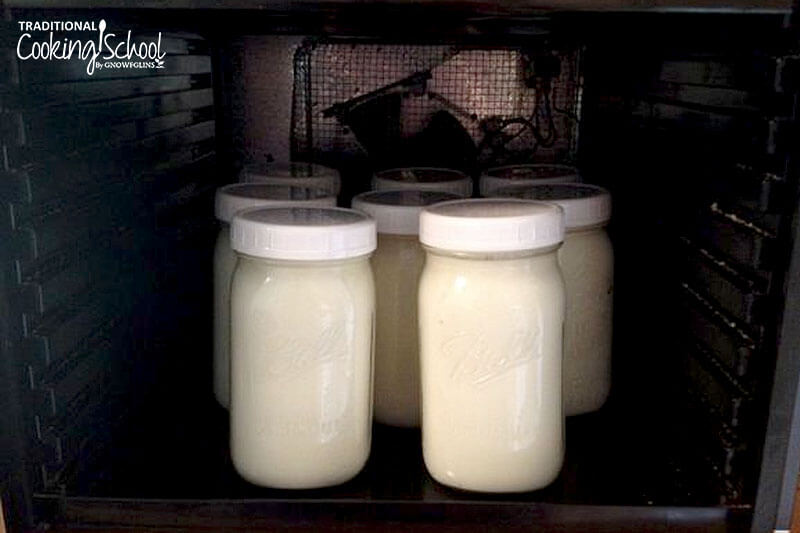
#3 — Shape Of Dehydrator
Will you be able to do other things with your dehydrator? For instance, a cube shaped dehydrator like the Excalibur 9-tray, with its removable trays (preferably 9), gives you space to proof bread dough or incubate yogurt (find the recipe in our Cultured Dairy eCourse!).
#4 — Number Of Trays
With the Excalibur, you have a choice of 4 or 9 trays. If you have room for it, I always recommend the 9 tray, even if you’re a small family. If you’re dehydrating, you’re doing batch processing and it allows you to do larger batches.
I haven’t heard of anyone who regretted getting the larger dehydrator.
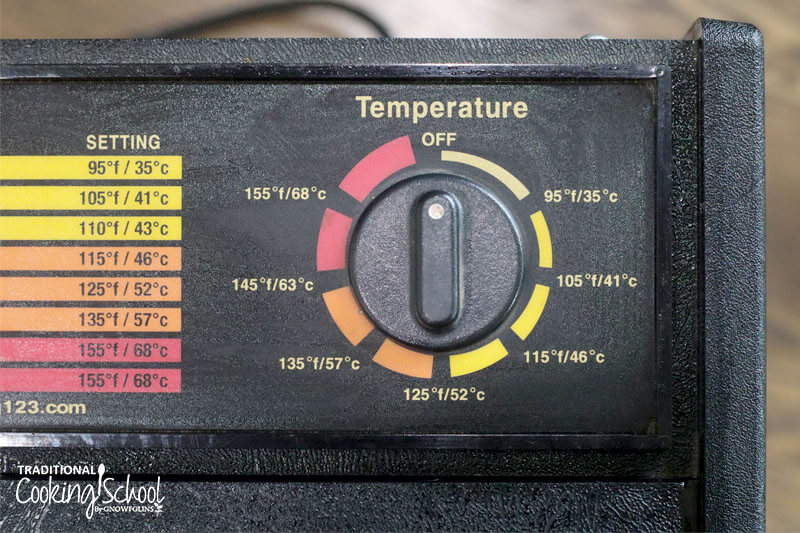
#5 — Thermometer
The first dehydrators did not have a thermostat, but today’s dehydrators do. Ideally, yours should have a temperature control range of 95 to 155 degrees Fahrenheit.
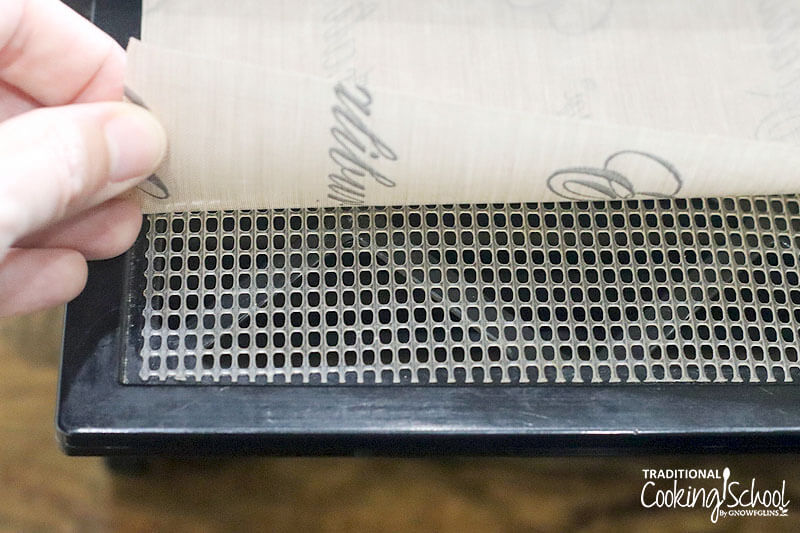
#6 — Tray Material
Most inexpensive, budget dehydrators offer plastic trays.
The Excalibur and Nesco/American Harvest plastic trays are BPA-free. The Excalibur offers an upgrade to stainless steel trays.
Although normally, I would suggest staying away from plastic, it’s less of an issue with dehydrating because we’re using lower temperatures. Plastic use is more of a concern at high cooking temperatures.
Still, at a minimum, I would suggest your dehydrator have BPA-free plastic.
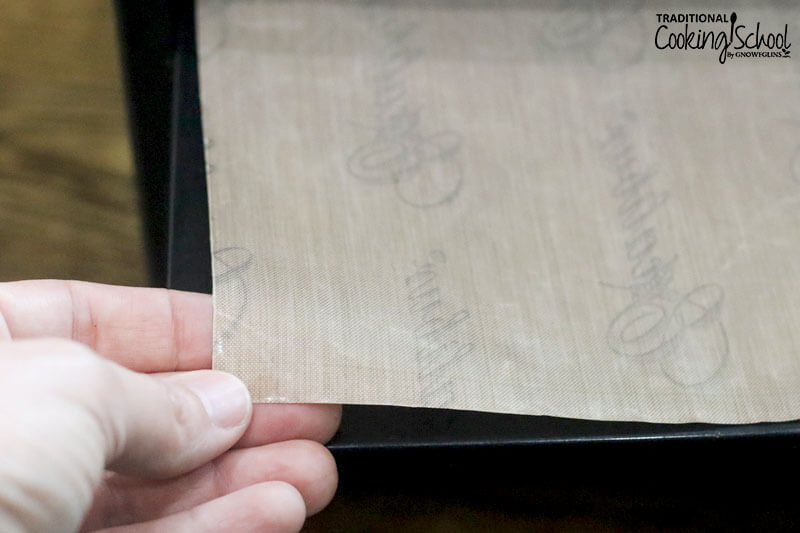
#7 — Tray Liners
When drying food in small pieces, or when drying wet foods, you need to line your dehydrator trays. Believe me, it is necessary!
Dehydrator manufacturers provide liner options. For instance, you can choose to get ParaFlexx sheets with your Excalibur dehydrator.
And the Nesco/American Harvest dehydrators offer plastic fruit leather accessory trays.
If ready-made liners aren’t included with your package or not in your budget, you can use unbleached parchment paper to line your trays. Very wet things (like pureed fruits) can wet the paper to the point it is saturated and tears, but if you’re careful you can probably work around that.
Non-Essential Features
Now I’ll share some factors that will come down to personal preference and price. These issues don’t have huge efficiency, functionality, or health impacts… so go with your heart’s desire and budget. 🙂
#1 — Digital v. Non-Digital
I generally choose manual over digital because 1) manual usually lasts longer and 2) is less expensive to repair.
Having said that, this is not always true. Just something to keep in mind.
#2 — Timer
A timer might be helpful if you work outside the home and want your dehydrator to turn off at a certain time but you won’t be there to do it.
Having said that, dehydrating is hardly ever “done” on time, so a timer cannot replace a person being there to check on, rotate food, and remove done pieces. The timer might turn off the dehydrator… but the food might not be done.
In addition, while it’s usually not a good idea to turn off a dehydrator before food is done… it is almost always okay for a food to keep drying and get more dry.
Also… you can always add an after-market timer, like the kind people use to turn on house lamps at a certain time of day even if they’re not home.
I prefer NOT to have a timer on my dehydrator. I keep an eye on how the food is progressing myself.
#3 — Door Style
Lori, you mentioned a clear versus solid door. Unless you like the look or idea of a clear door (and can afford it), I don’t consider it essential.
If the door is clear, you might be able to see the front of each tray while food is drying. But to really check how dry the food is, you’ll have to open the door and pull out the trays.
More Traditional Cooking Info…
If you haven’t already, be sure to sign up for the FREE Traditional Cooking Cupboard… you’ll get 14+ FREE eBooks featuring recipes, info, and articles on Traditional Cooking School, and a free Traditional Cooking video series!
Click here to grab your 14+ free eBooks and free video series today!
Any Questions Or Comments?
If you have other questions or comments about dehydrators, be sure to leave them in the comments!
Helpful Links
- FREE Traditional Cooking Video Series + 14 Free eBooks on Traditional Cooking
- Dehydrating eBook or eCourse
- What’s The Best Food Preservation Method… Canning, Freezing, Dehydrating, or Fermenting? #AskWardee 147
- Dehydrating Tools Guide
- The Excalibur 9-tray dehydrator I recommend
- ParaFlexx sheets for Excalibur dehydrator
- Dehydrating tips and recipes
How did you choose the best food dehydrator for your family? What features are essential for you and why?
We only recommend products and services we wholeheartedly endorse. This post may contain special links through which we earn a small commission if you make a purchase (though your price is the same).



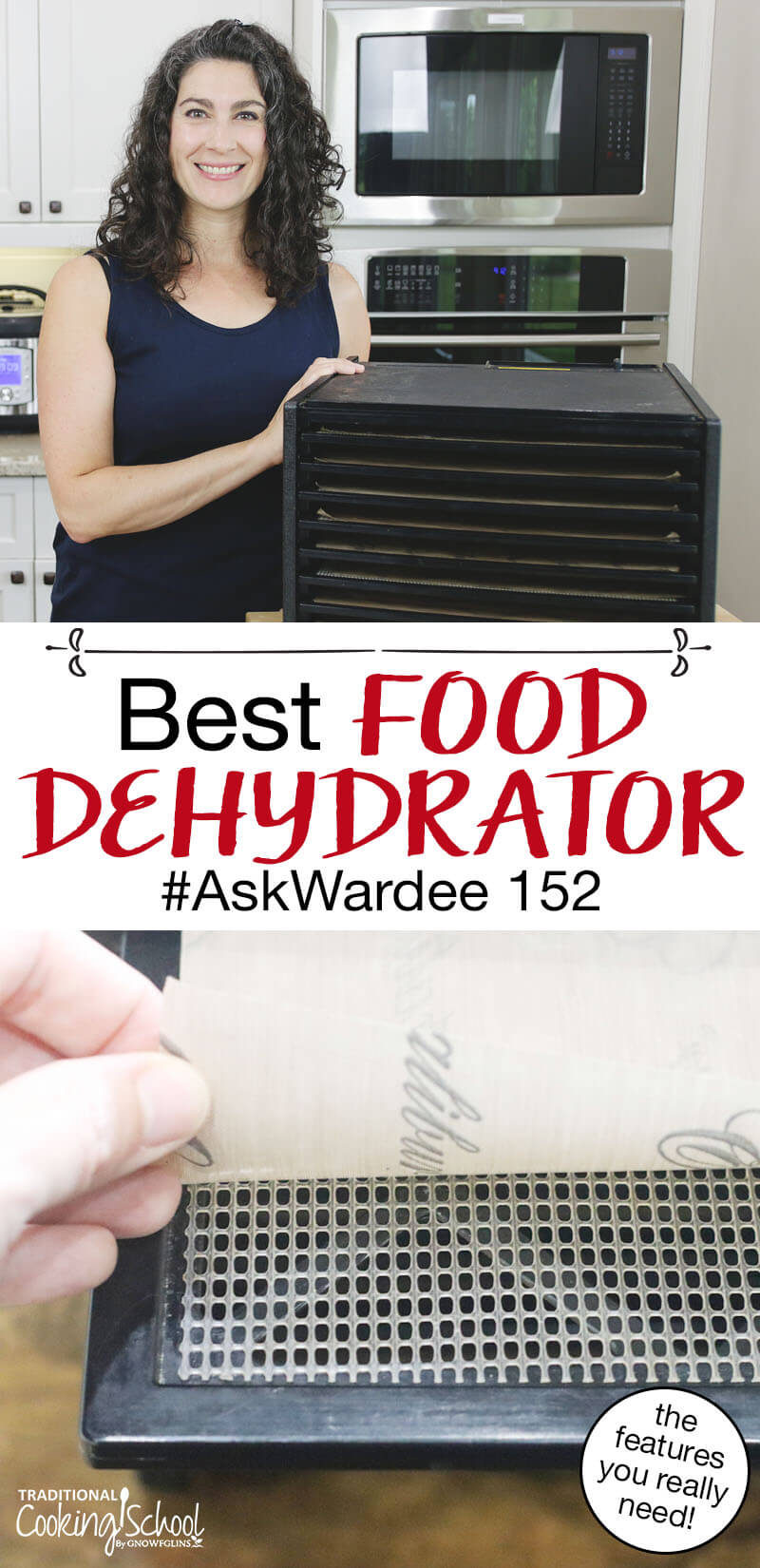
If you live in the UK look at the Buffalo dehydrators I brought one years ago, loved it but it broke down when I was in the middle of processing large amounts of chestnuts. Don’t ask me why, I’m putting it down to the stress of not wanting to lose my hoard but I looked to see what was now available and the Andrew James, looks like a greenhouse with a fan in the middle. It had lots of good reviews and I had the idea of longevity I could put a solar fan in the middle and run it like that in the sun. Its awful I have no idea what they were thinking putting a hole in the middle!
I have been back and forth for a few years whether to get my old buffalo repaired, or they now sell a stainless steel version like Excalibur…….sigh. Either way if you are interested in dehydrating things like nuts and seeds they will drop down the sides and middle of the Andrew James and I have not even dared try fruit leather there’s just nothing to hold liquid in and hardly any surface area, it’s actually hard to know what other people are using it for?
There are some brands that say you can only run them for 12 hours so be careful if you want to do longer items like meat.
It’s a funny thing though you start off should I, will I use it and before you know it when it breaks down you are in a panic and you don’t know how you can live without it.
Hey, Wardee! Dehydrating is a big part of my life, too. I have a really old Harvest Maid I bought in ’89 or ’90. It only last year started acting up but it still dries. I’m looking for a new one and I was wondering what kind of sheet you use to make fruit roll-ups. My sheets are round to fit my dehydrayor. I don’t know if Excalibur (or any other company) makes fruit roll-up sheets to fit. Any help is appreciated.
julie
Hi Julie,
Excalibur has several types and sizes of drying sheets. Check out the links above for the drying sheets.
~ Vicki, TCS Customer Success Team
Hey, Wardee! I’m wondering how you got a 9-tray dehydrator with a minimum temperature of 95 degrees. There’s not one on the Excalibur site and when I contacted them by email they said the only dehydrator they have that goes that low is a 10-tray with a temperature range of 85-165. Of course, I want the lower range so I can keep the food raw. In the Excalibur manual it says enzymes are still viable at 140 degrees but I’ve always heard enzymes are killed above 110 or so. Did Excalibur stop making the model you have?
Thanks,
julie
Hi, Julie.
I’m sorry for the delay!
Yes, Wardee’s does really goes down to 95F. We have heard from others that they can’t get one like this either, so I assume that Excalibur stopped offering this. I’m so sorry. Perhaps to look for an older one used?
~Danielle, TCS Customer Success Team
Do you think the material matters (bpa free plastic v stainless steel) if you are using a tray liner? I would be using unbleached parchment paper for seeds.
Hi Kristin, we would still recommend using bpa free plastics or stainless steel trays even if using a tray liner. Hope this helps. ~ Vicki, TCS Customer Success Team
I read somewhere that Excalibur uses BPA plastic in their dehydrator, not the stainless steel racks but wherever plastic is used in the unit. Do you know if this is true? I sent an email to Excalibur asking the question but I have never gotten a response.
Hi, Jeannine: I’m happy to help! We found this link on the Excalibur website regarding the materials used in the construction of their dehydrators: https://excaliburdehydrator.com/pages/faqs We are not concerned about the plastics because of the low temps used in the dehydration process. —Sonya, TCS Customer Success Team